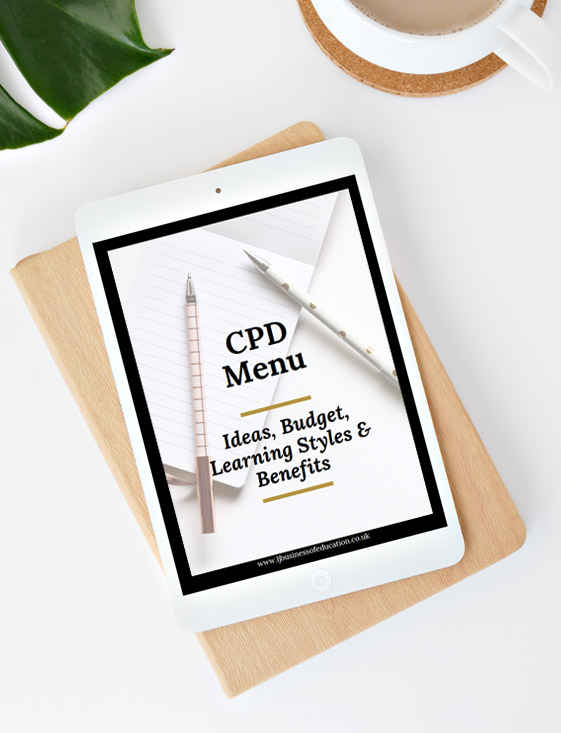If your staff are determined to leave, there’s ultimately little that any headteacher can do to stop them. You can, however, take steps to reduce the likelihood of staff wanting to move on due to professional misgivings. Here’s how to go about identifying staff concerns ahead of time and assemble a robust retention strategy.
When it comes to recruitment and retention, it’s easy to get lost in short-term activities instead of focusing on long-term strategy. The truth is, there are many touch-points and milestones that can create ‘deal-breakers’ for your employees resulting in resignation. Some are beyond your control but many are within it. Before we look at what you can do to create a robust retention strategy, let’s first look to our employees and what they want from us as employers. These factors, as a whole, constitute what is known as the ‘psychological contract’.
The psychological contract is the ‘silent partner’ of the employment contract but it is different in that it is unwritten and subjective. For the employee, the psychological contract is focused around their expectations of the employer and how they hold up their end of the ‘employment deal’. These expectations relate to areas such as:
- Reward
- Recognition
- Development and progression
- Security
- Management support
- Flexibility and work/life balance
- Autonomy
- Fair treatment
- Trust
The management of the psychological contract is key to positive employment relationships and the facilitation of employee choice in order to improve both recruitment and retention.
Though the psychological contract may be intangible, it is similar to the employment contract in that it can be ‘breached’. From the employee perspective, the most serious form of breach is through organisational and management behaviours which compromise one or more of the above areas. Examples include: over promising and underdelivering, a ‘do as I say not as I do’ culture, a lack of follow through, not meeting deadlines, mismatched processes and practice and moving the goalposts.
For an employee these types of breach, if unresolved, often result in disengagement. This might start out with feelings of dissatisfaction, progressing to working to rule and doing as little as they can. If this continues for a period of time, it could impact their wellbeing and even result in prolonged periods of absence or resignation.
As employers, what we have to wrestle with and be alert for are instances where the employee perceives that there has been a breach. This could be due to a lack of communication or information or simply staffs’ own interpretation of management behaviour. Real or perceived, these breaches can be avoided and addressed – thus mitigating the impact on turnover and staff engagement.
Whatever the truth or reality is, how your staff perceive you as an employer will impact their psychological contract with the organisation. From the moment that staff join your organisation, they are constantly yet often unconsciously assessing whether leaders do what they say they will, honour the promises they make, lead by example and apply policy fairly and consistently.
When you start looking at the employment relationship through the lens of the psychological contract, the levers you can pull to maintain a healthy psychological contract with your staff become much clearer.
From your perspective as an employer, the psychological contract lives in what we know more commonly as ‘how things are done around here’. In relation to the list of what our employees want from us, these ‘things’ include:
- The creation and management of staffing structures and restructures
- Recruitment processes
- Leadership and line manager behaviour
- Policies and implementation
- Appraisal and Performance Management
- CPD, career progression and succession planning
All of these things will currently exist and/or take place within your organisation but how well your organisation does these things has a significant impact on how staff view you as an employer and whether they want to continue working for you. In essence, employer behaviour in these areas determines whether an employee feels supported, treated fairly, valued, recognised, developed, allowed autonomy and trusted.
Here are some areas to focus on that will help you to both shape and maintain a healthy organisational psychological contract and improve retention:
1. Job Design & Recruitment
Turnover can create the perfect opportunity to affect organisational change with minimal disruption. If you have your finger on the pulse and your eye on the future, you can reduce the likelihood of wholesale restructures down the road. Also, take the chance to really think about not only the vacancy that needs to be filled but what type of person the role would suit. Make it an attractive role and be clear what it will be like to do this job on a daily basis; for all its quirks, make sure you highlight its perks. If you’ve nailed job design, then attracting the right candidate for your role shouldn’t be an issue. However, the ‘psychological contract’ starts here – everything that is written, spoken and communicated from the start to the end of the recruitment process sets the tone for the future working relationship. Be consistent, don’t make promises you can’t keep and deliver on everything you say you will. This rolls right through into induction and probation periods. Don’t leave them adrift, wandering around your corridors. Take charge, set expectations and set your stall out in terms of what your staff can expect to receive from you as a member of your team.
2. Line Management and Workload
How your line managers look after their staff is a critical part of maintaining the psychological contract. How managers treat people has a direct impact on how staff feel about coming to work in the morning. They are the ‘face’ of the organisation and the decisions that are made so how they communicate to staff matters. The value that you place on the quality of line management directly indicates how much you value your staff.
How well you listen to you staff is also crucial in maintaining the psychological contract; workload being a good example of this. If a task is seen as ‘worth it’, staff will be more likely to engage with it in a positive way. If they see it as a ‘waste of time’, this will affect their view of their role and how they feel about working for you. As I said before, their perception of what’s worth it and what’s not may be skewed but the sooner you address these discrepancies, the better.
3. Performance Management, CPD & Succession Planning
If job design and recruitment form the beginning of the psychological contract and line management establishes it, performance management, CPD and succession planning cement it. These processes are about identifying those who need support, supporting those who are ambitious and ready to progress, identifying specific organisational and individually beneficial CPD and having a meaningful dialogue with staff. They alone embody and facilitate several of those employee ‘wants’ we covered: reward, recognition, development, progression, support, fair treatment, autonomy and trust so it’s essential that you get them right.
How you do business defines both your culture and your identity and how you do something is just as important as what you do. Polices and processes must be designed and actively managed with your people in mind; not only to hold them accountable or to measure them but to recognise them, reward them, bring out the best in them, engage them and value them. By doing this, the right people will not only want to work for you, they will stay working for you.
Like what you’ve read? Subscribe to this blog by clicking here.
P.S. Have you joined The Business of School Leadership Facebook Group yet? For practical support, advice, tips, tools & guidance about all things school leadership, join us in the community by clicking here.
Written for: Primary School Management Magazine (@primaryleaders)











